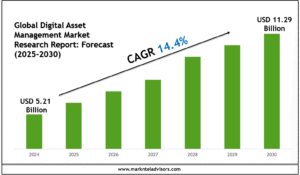
Over the past few years, there has been a significant evolution in the delivery economy. Customers now demand fast, easy, and dependable delivery experiences for anything from groceries and restaurant meals to retail goods and medical supplies. By 2025, companies that wish to remain competitive will find that specialized delivery applications are a strategic necessity rather than just an extra convenience.
Custom-built delivery apps, as opposed to off-the-shelf options, provide features, interfaces, and connectors that are specifically suited to a business’s operational requirements. This blog explores why custom delivery apps are reshaping industries and how they’re giving businesses a powerful edge in 2025.
1. Tailored to Unique Business Needs
Every company faces operational difficulties, client expectations, and delivery workflows. Rather than requiring businesses to adopt generic functionality, custom delivery apps are designed to meet these particular needs.
For example:
- A grocery chain can integrate real-time inventory tracking.
- A restaurant brand can customize order preparation workflows.
- A medical supplier can add compliance features for sensitive deliveries.
Why it matters in 2025: As customer expectations rise, personalization in service delivery is becoming a key differentiator.
2. Enhanced Customer Experience and Loyalty
A smooth, intuitive, and branded delivery app can significantly boost customer satisfaction. Custom delivery apps allow businesses to design a user interface that reflects their brand identity while offering advanced features like:
- Live order tracking.
- Push notifications for status updates.
- Personalized promotions and rewards.
When customers feel a brand understands and caters to their needs, they’re far more likely to become repeat buyers.
3. Seamless Integration with Business Systems
Integrating custom delivery apps with pre-existing ERP, CRM, POS, or warehouse management systems is one of their main advantages. This guarantees speedier delivery times, fewer manual errors, and real-time data synchronization.
Businesses are giving these connections top priority in 2025 in an effort to streamline supply chains and reduce operational bottlenecks.
In 2025, businesses are prioritizing such integrations to optimize supply chains and reduce operational bottlenecks.
4. Greater Control Over Data and Analytics
Off-the-shelf delivery platforms often limit access to user data. With a custom delivery app, businesses retain full ownership of valuable customer insights, including:
- Order trends.
- Delivery time analysis.
- Customer behavior patterns.
These analytics empower companies to make data-driven decisions, improve delivery efficiency, and fine-tune marketing strategies.
5. Scalability for Future Growth
Custom delivery apps are built with scalability in mind. As a business expands into new regions, adds services, or introduces new product categories, the app can evolve accordingly.
Why it matters: In 2025, consumer markets are highly dynamic. Businesses with flexible and scalable delivery platforms can adapt faster to changes in demand.
6. Cost Efficiency in the Long Run
Even though creating a custom delivery software could cost more up front, it frequently saves money over time. Companies can cut commission payments, lessen their reliance on third-party platforms, and avoid ongoing membership fees.
Operational expenses are also reduced by features like AI-driven demand forecasting and route optimization.
7. Competitive Advantage in the Market
Having a delivery app that represents your brand’s distinctive value offer is a competitive advantage in a congested market. From incorporating AI-powered chatbots for customer service to providing eco-friendly delivery monitoring for customers who care about sustainability, a tailored solution fosters innovation.
Result: Businesses can stand out not just for their products, but for their delivery experience.
8. Meeting Industry-Specific Compliance
Certain industries — like healthcare, food services, and alcohol delivery — have strict compliance requirements. Custom delivery apps can embed industry-specific safety checks, age verifications, and regulatory guidelines directly into the workflow.
This ensures smooth operations while staying within legal boundaries.
Conclusion
Delivery is a key component of the customer experience in 2025 and is no longer a supplemental service. Off-the-shelf alternatives just cannot match the customisation, scalability, and data management that custom delivery apps give enterprises.






